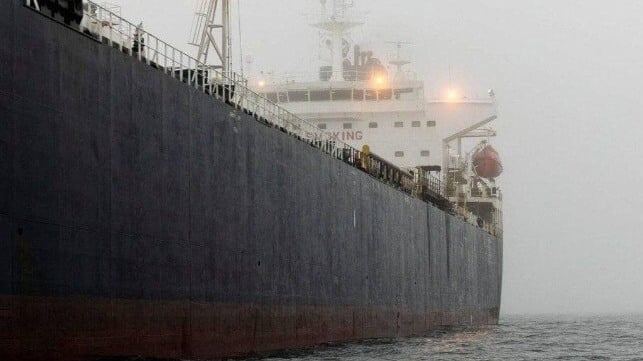Suspected Sabotage Ship Dragged Anchor for Up to 50 Nautical MIles

Recent developments in the Gulf of Finland have raised serious concerns regarding maritime security. A tanker, suspected of damaging multiple subsea cables, has come under intense scrutiny. Finnish authorities conducted a sonar survey that revealed the vessel dragged its anchor for up to 50 nautical miles. This incident has sparked an investigation into potential criminal activities associated with the ship, now known as the Eagle S. The implications of this case extend beyond mere vandalism, hinting at possible espionage activities linked to the vessel.
Anchor Dragging Incident and Investigation
The investigation into the Eagle S began when Finnish authorities discovered that the tanker had dragged its anchor along the seabed for a significant distance. According to Sami Paila, an inspector with the Finnish National Criminal Police, the anchor chain was still in the water when officials boarded the vessel. The anchor itself was missing, raising questions about the ship’s operations. Paila stated, “The trail ends where the ship lifted the anchor chain. There are several dozen kilometers [of trail] east of that point, if not almost a hundred kilometers.” This evidence is crucial for the ongoing investigation.
The Eagle S, previously part of the so-called “dark fleet,” is now facing serious allegations. Authorities have charged the vessel with three criminal offenses: aggravated vandalism, aggravated regulatory offense, and aggravated interference with telecommunications. The ship has been moved to a sheltered anchorage near Porvoo for further examination. Currently, at-sea investigations have been halted due to adverse weather conditions, but authorities plan to resume as soon as possible. Meanwhile, police are interrogating the crew to gather more information about the incident and the ship’s activities.
Espionage Allegations and Maritime Security Concerns
Adding another layer of complexity to the investigation are allegations of espionage linked to the Eagle S. A maritime commercial services professional disclosed to Lloyd’s List that the tanker had previously carried sophisticated signals intelligence equipment. This equipment was reportedly removed at the end of a voyage, and the crew had been threatened into silence regarding its purpose. Although Finnish police dismissed these claims as rumors, the potential for espionage raises alarms about maritime security in the region.
Concerns about Russian intelligence activities have intensified, especially given the historical context. Russian intelligence services have a long-standing covert signals intelligence program, particularly in Northern Europe and Scandinavia. During the Cold War, the U.S. Navy designated certain vessels as “Auxiliary, General Intelligence (AGI)” trawlers due to their espionage capabilities. Today, analysts worry that Russia may utilize its extensive “dark fleet” of lightly-regulated tankers to conduct similar operations. Estimates suggest that this fleet constitutes over 15 percent of the world’s tanker fleet, making it a significant concern for global maritime security.
The ongoing investigation into the Eagle S serves as a reminder of the complexities and risks associated with maritime operations. As authorities continue to gather evidence, the implications of this case could have far-reaching effects on international relations and maritime safety.
